|
BULB LOG 17 ---- 27th April 2005
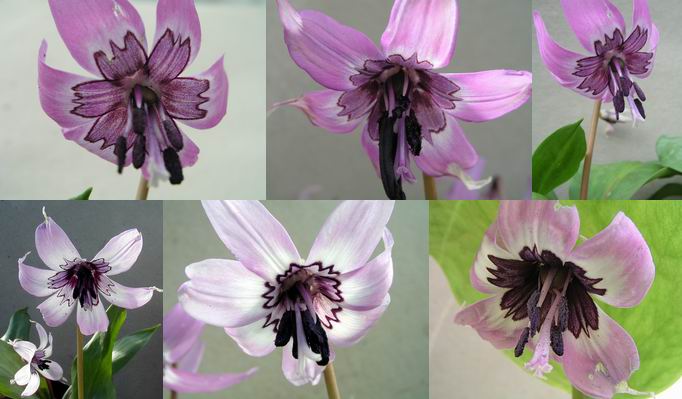
Erythronium japonicum montage
There has been some discussion and a lot of admiration of Erythronium japonicum, after some pictures were posted on the forum pages. The montage above shows a few of the variations that can be seen in the forms that have come in via China over the last five years or so - they are frankly stunning.
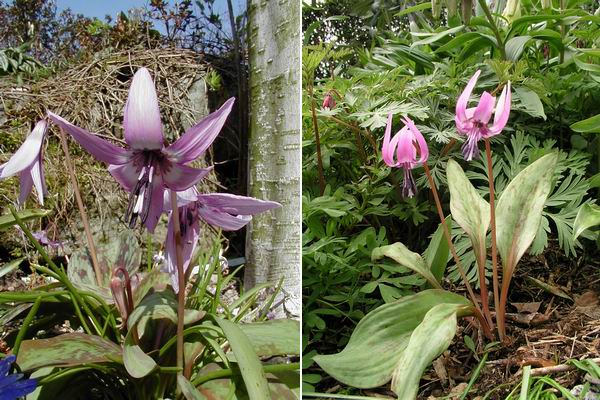
Erythronium japonicum x2
Here are two of the forms that we have grown for many years and they are very nice, but, their allure falls short of the forms in the montage, why? The more recent introduction has a better defined and often more dramatic pattern of deep blackcurrant in the centre of the pale purple/pink flower and the ends of the petals are more acuminate, they taper off to a wisp at the end. Erythronium japonicum is sometimes listed as a sub species of E. dens-canis, and it is certainly related to that species but I think that E. japonicum, like E. sibericum and E. caucasicum, are all distinct enough to be good species in their own right within the Eurasian clan.
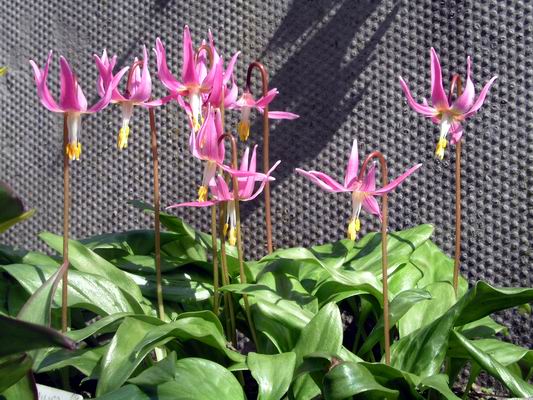
Erythronium revolutum small form
Now to North America where you will find Erythronium has a wide range of habitat and form. I call the form of Erythronium revolutum above, 'the small form', to distinguish it and it is always shorter than the more typical forms. It is very distinct with its short stems holding its dark pink flower over plain green leaves.
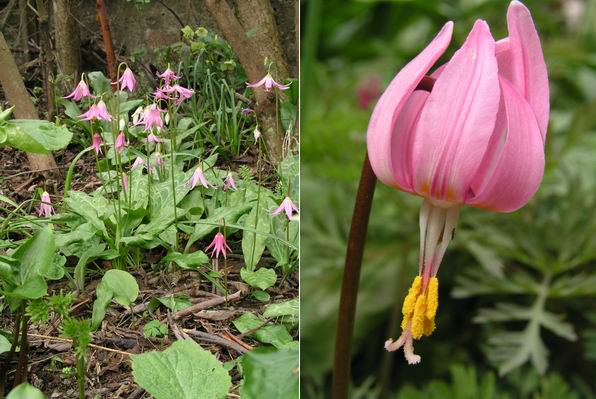
Erythronium revolutum
In the left hand picture you can see some of the more typical sized Erythronium revolutums and if you look in the lower right hand quarter of the picture you will see one of these small ones, with the dark flower, this illustrates the scale of it, up to 10cms in height. Other features that distinguish it are the leaves are always green without any of the dark markings often seen on E. revolutum but they do sometimes show slight signs of pale markings. The flowers recurve very sharply giving the flower a distinctive look often described 'like a dodecatheon' and there is nearly always a degree of purple towards the end of the filaments and the style. We raised the original plants of this form from seed collected towards the northern end of the range for E. revolutum, in Canada, and all our own garden seedlings retain the same characteristics.
It is inevitable as we grow so many erythroniums in a relatively small area that we will get hybrids occurring, but not so many as you might expect - most seedlings come true to species and it is a small number that show signs of having crossed with another species.
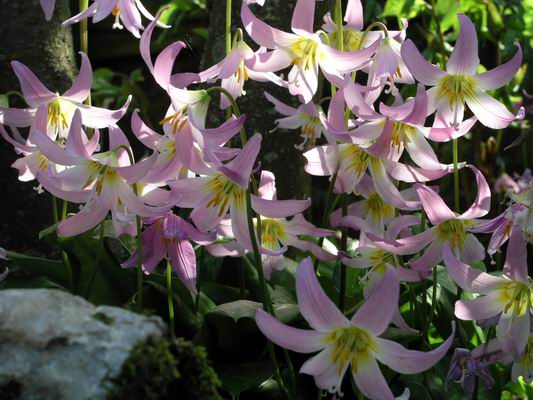
Erythronium 'Craigton Cover Girl'
Erythronium 'Craigton Cover Girl' was an open pollinated seedling that we selected out from a number of similar hybrids as deserving a name. The reasons were that it was a very attractive plant with up to five well marked pink flowers per stem, nice leaves and most importantly it multiplies vegetatively to from clumps. It is essential that a named plant should increase well so that it can be distributed in cultivation, there is no point giving a name to a plant that, no matter how beautiful, cannot be propagated.
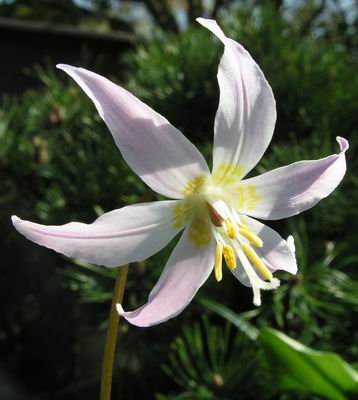
Erythronium elegans x revolutum
This flower has appeared in a batch of Erythronium elegans seedlings; it is one of only two flowers out of around 150 seedlings to flower this year the rest we expect to flower for the first time next year. Erythronium elegans is a pure white flower with a yellow centre, the petals will turn pink as the flower starts to go over, but this one opened pink. Also the filaments (the part that holds the anthers with the pollen) of E. elegans are slender but widen in this one, all suggesting the possibility of a hybrid with E. revolutum. The problem now is how do we separate this individual out from the seed box? Well I will leave it there until they have all flowered next year to see what else we have then I will work out if it is worth taking out and growing on separately.
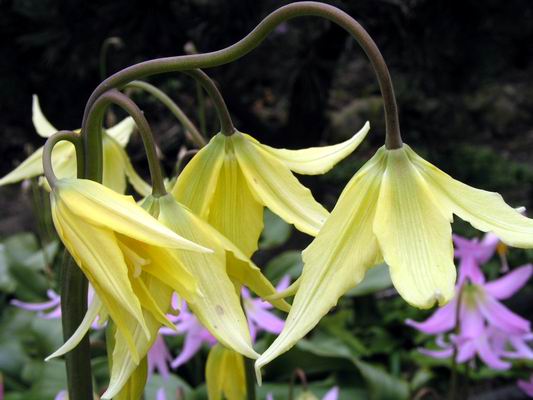
Erythronium 'Susannah'
Erythronium 'Susannah' has to be the best E. tuolumnense hybrid I have seen. Raised by John Walker, it can have as many as five flowers per stem the largest of which can measure 10cms across. Although it is still a rare plant it does increase well and should get around in the future.

Erythronium 'Susannah' flower
It has a good yellow flower with a white eye and you can get up to five of these on a single stem.
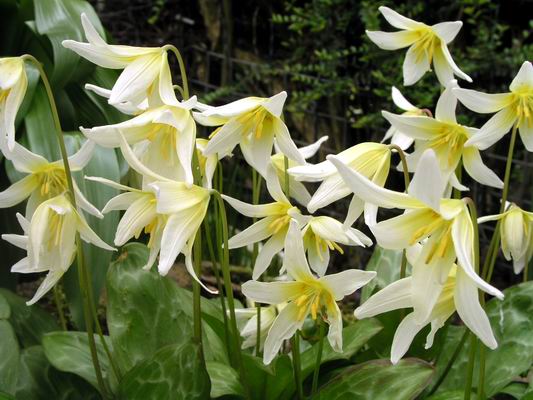
Erythronium 'Craigton Cream'
Another of our own named hybrids is Erythronium 'Craigton Cream', an open pollinated hybrid of Erythronium helenae. Again the main reason for us giving it a name is that as well as being an attractive plant it increases well and quickly makes good clumps in the garden.
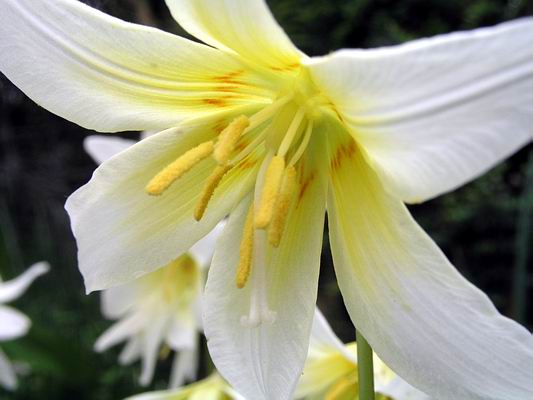
Erythronium 'Craigton Cream' flower
A look inside the flower shows the brown markings on the yellow eye but also note that the style is bent downwards, this is a typical feature of E. helenae.
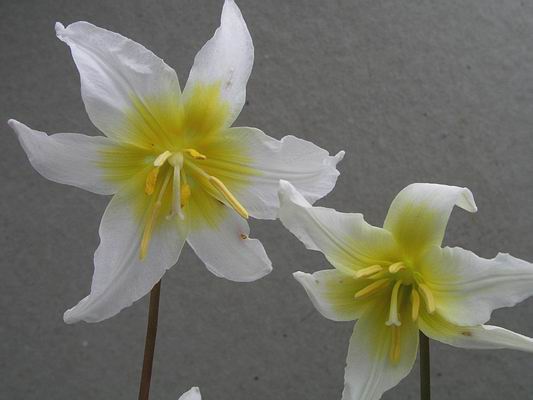
Erythronium helenae
Compare 'Craigton Cream' with Erythronium helenae above and you will see they both have the bent style. The other parent of 'Craigton Cream' is not known but I would speculate that it could be E. californicum which also has the brown zig-zag markings in the yellow throat.
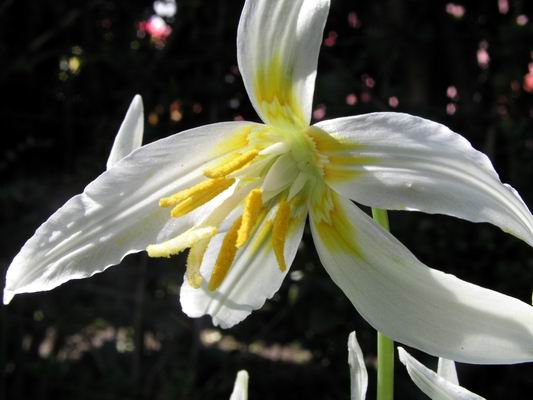
Erythronium oregonum large petals
I also have my eye on this form of Erythronium oregonum because of its extremely large petals, it is a hand span across - unfortunately it is slow to increase.
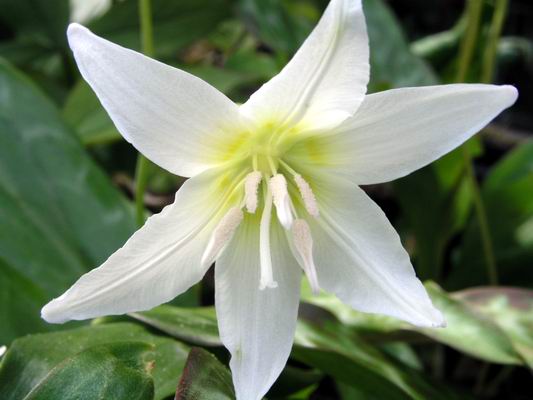
Erythronium pale anthers
A few other seedlings, involving E. californicum, with attractive flowers that I have marked to watch, are the one above with pale flowers without the dark zig-zag markings and the one below with very unusual pink pollen.
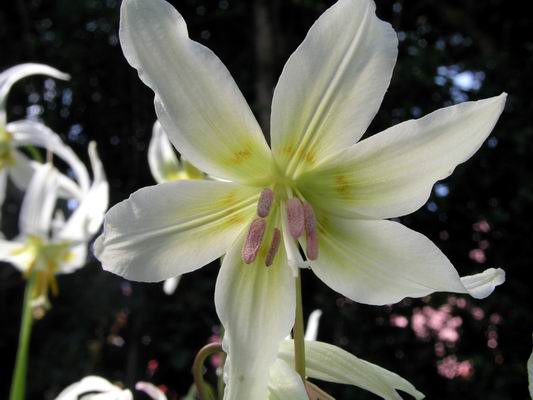
Erythronium pink anthers
This batch of seed produced a number of unusual forms with varying shades of pollen colour and different degrees of markings in the flowers, all of which we will trial.
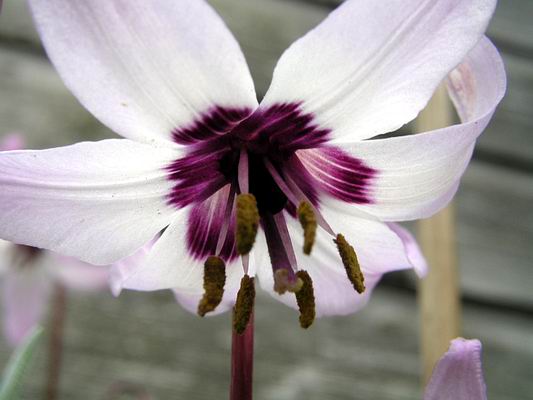
Erythronium hendersonii
Erythronium hendersonii is one of the most requested and always sells out very quickly from any bulb list. It has to be increased by seed as, so far as I know, no one has yet raised a form that increases at any speed. I will continue to raise it from seed with the hope that one day we will get a form with well marked flowers that will also increase.
^ back to the top ^
|

